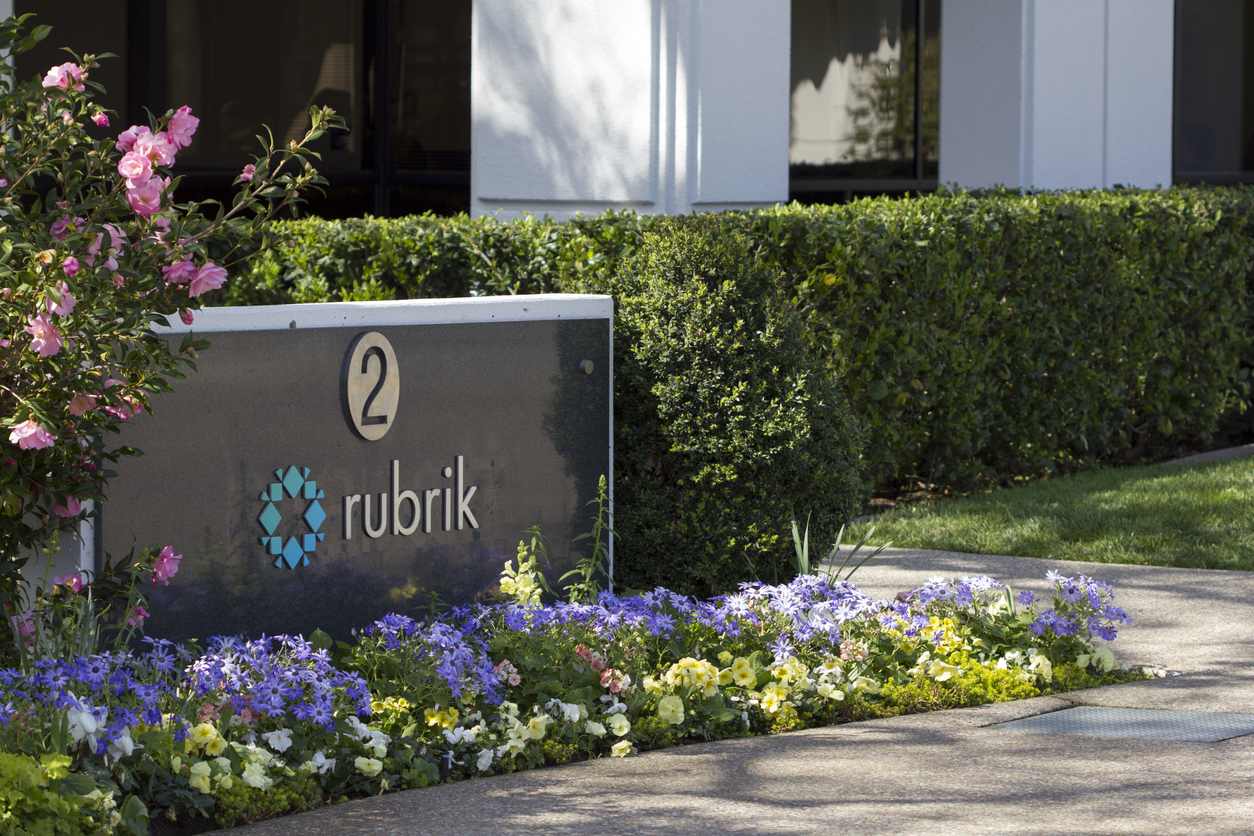Visa’s AI Innovation and How It Affects Investors

We are active globally in over 200 countries and regions. Visa Co., Ltd. (V) It is a strong player in the financial services industry. Over the years, the company’s innovative payment solutions have enabled individuals to transact anytime, anywhere and via a variety of devices and payment methods.
From mobile payments to contactless transactions, Visa continues to introduce new technologies that transform the way we pay and do business. And now, with its latest suite of payments products and services, the credit card giant continues to demonstrate its capacity for innovation and growth in the digital payments space.
Visa unveils new products for the digital age
At the annual Visa Payments Forum in San Francisco earlier this month, the company said: Introducing innovative products Services designed to meet the changing needs of businesses, merchants, consumers, and financial institutions.
These services, scheduled to launch later this year, include Visa Flexible Credentials, which allows consumers to switch payment methods with a single card; Users enjoy unparalleled flexibility, including debit, credit, “Pay in 4” buy now pay later options or reward points. Currently available in Asia, the Visa flexible credential is expected to launch in the U.S. market later this summer in partnership with Affirm.
The company is embracing the widespread adoption of mobile devices by introducing an innovative “Tap to Everything” feature that leverages the diversity of NFC-enabled devices. These new features include ‘Tap to Pay’, which transforms any device into a POS terminal. ‘Tap to Confirm’ for easy online shopping authentication; There’s also ‘Tap to Add Card’ for added wallet security when adding cards to your digital wallet or app, and ‘Tap to P2P’ for seamless transfers between family and friends.
V has introduced the Visa Payment PassKey service to combat the growing threat of online payment fraud. This takes security to the next level by replacing passwords with biometric authentication for online transactions. This feature integrates seamlessly with Click to Pay to provide a seamless payment experience while enhancing security. Additionally, the company is partnering with issuers around the world to enable Click to Pay and Visa Payment Passkey services on new Visa cards, reducing the need to manually enter card details and passwords.
Credit card companies are also digitizing and streamlining account-to-account (A2A) payments through “pay by bank,” giving consumers greater flexibility in choosing their payment method. Visa is leveraging AI technology to detect and prevent fraud in A2A payments through collaboration with global real-time payments (RTP) networks. Already making progress in Latin America and piloting in the UK, Visa Protection for A2A payments identifies 60% of previously undetected scams and scams, ensuring a safer payments ecosystem for everyone.
Finally, the company also introduced Data Tokens, a privacy-focused feature that allows consumers to control data sharing with merchants for personalized offers and revoke access through banking apps.
These strategic initiatives represent a promising outlook for the ever-changing payments landscape, and Visa’s commitment to continuous improvement is poised to strengthen its foundation.
Visa remains at the forefront of AI innovation.
Threat actors are increasingly using sophisticated techniques, such as automated scripts and botnets, to amplify card testing attacks, resulting in significant operational costs and $1.1 billion in annual fraud losses. To combat these threats, Visa announced an update to its Visa Account Attack Intelligence (VAAI) service on May 7. Introduction to VAAI Score.
This new tool leverages generative AI components to identify and score enumeration attacks, providing a real-time risk score for each transaction. VAAI Score, initially available to U.S. issuers, aims to mitigate fraud and operational losses by detecting and preventing enumeration attacks in card-not-present (CNP) transactions.
The company will operate on March 27, 2024. Added three new AI-based risk and fraud prevention solutions These additions, which form part of the comprehensive Visa protection suite for our growing global value-added services business, help prevent fraud in instant account-to-account and card-not-present (CNP) payments and enhance security for transactions on and off the Visa network. Aim.
Visa’s Strategic Expansion Initiative: Boom or Bust?
Recently, Visa partners with SKUx, a digital payment solutions provider, enhances the digital payment experience for select merchants and consumer goods companies. The goal of this collaboration is to address customer needs including customer acquisition, loyalty programs, and consumer management.
Visa customers will have access to SKUx’s digital payments platform to improve B2B and B2C payment flows. Additionally, this strategic move highlights V’s efforts to strengthen its services and attract new customers, ultimately increasing revenue opportunities.
On March 26, Visa Groundbreaking agreement with US merchantsMore than 90% are small and medium-sized businesses. The agreement lowers credit exchange rates and limits them to 2030. It also includes updates to several key network rules, giving merchants more choices in how they accept digital payments.
Although the settlement is subject to court approval, the move aims to strengthen the company’s relationships with merchants and improve its ability to accept Visa payments, potentially leading to increased transaction volumes.
Also, in January of this year, the company Acquisition of Pismo, a global cloud-based issuer processing and core banking platform. This acquisition will enable Visa to offer enhanced core banking and card issuer processing capabilities to customers across a variety of product types through cloud-native APIs. V can leverage Pismo’s platform to expand support and connectivity for new payment methods and real-time payment networks and enhance services for financial institution customers.
What are the basics of Visa?
Despite persistently high interest rates, U.S. consumer spending has remained robust thanks to Americans’ continued desire to buy big-ticket items and travel abroad. at 2nd quarter V’s net revenue for the year ended March 31, 2024, was $8.78 billion, up 9.9% from the year-ago quarter, exceeding Wall Street forecasts of $8.62 billion.
Consumer spending remained resilient across all segments during the quarter, with Visa payment volume up 8% year-over-year. Demand for international travel remains strong, with cross-border travel volume (excluding within Europe) surging 16%. Transactions processed reached $55.5 billion, an 11% increase from the previous year.
Additionally, the company’s operating profit increased slightly from the previous year to $5.35 billion. Non-GAAP net income and non-GAAP earnings per share were $5.12 billion and $2.51, respectively, an increase of 16.7% and 20.1%, respectively, compared to the previous year.
As of March 31, 2024, Visa had $12.99 billion in cash and cash equivalents, which is a significant cash pile, but relatively low compared to $16.29 billion as of December 31, 2023. However, the company was able to return $3.8 billion to shareholders in the second quarter. Through dividends and share buybacks.
On April 23, 2024, Visa announced a quarterly dividend of $0.52 per share of Class A common stock, payable to shareholders on June 3, 2024. V’s four-year average dividend yield is 0.67%, and its current dividend of $2.08 is: That’s a yield of 0.75% at current price levels.
With a solid payment history, the company’s dividend has grown at a CAGR of 16.8% and 15.9% over the past three and five years, respectively. Moreover, Visa has increased its dividend for 15 consecutive years, which makes it attractive to income-oriented investors.
What are Visa’s future plans?
The Street expects Visa to generate revenue of $8.93 billion in the third quarter (ending June 2024), up 9.9% from the same period last year. The company’s earnings per share for the quarter are expected to be $2.42, up 11.9% year-over-year. Moreover, V has surpassed consensus EPS and revenue estimates in each of the four subsequent quarters, which is promising.
Analysts expect sales to surge 10.1% year-over-year to $35.95 billion in the fiscal year ending September 2024. They expected earnings per share to reach $9.96, up 13.6% year-over-year. Additionally, Visa’s revenue and earnings per share in fiscal 2025 are expected to reach $39.7 billion and $11.19, respectively, up 10.4% and 12.4% from the same period last year.
conclusion
Credit card providers delivered solid top-line growth and healthy profit margins in their latest quarterly results as consumers shrug off worries about a slowing economy and use their cards for everything from travel to dining out.
In addition to leveraging partnerships to strengthen its digital capabilities, Visa has continued to pursue significant investments to complement them. These initiatives are expected to increase transaction volume and enhance customer retention, and the company projects low double-digit net revenue growth in fiscal 2024 on an adjusted constant dollar basis.
furthermore, UBS predicts Taking into account currency neutrality criteria and the performance observed throughout the first half of the year, we achieved solid organic net revenue growth of 11% to 12% for the year. Reflecting this positive outlook, the company increased its price target on V stock from $315 to $325 while maintaining a Buy rating on the stock.
In addition, it shows solid profitability, with a 12-month trailing gross profit ratio of 97.81%, which is 63.6% higher than the industry average of 59.78%. V’s 12-month trailing net profit and leveraged FCF margin are 53.86% and 46.69%, respectively, which are 133.7% and 166.1% higher than the industry averages of 23.05% and 17.55%, respectively. Likewise, its trailing 12-month ROTA of 19.90% compares to the industry average of 1.06%.
In terms of price performance, V shares are up more than 15% over the past nine months and are up nearly 6% year-to-date. To that end, it may be wise to scoop up shares of this Dow Jones card giant for potential profits.


